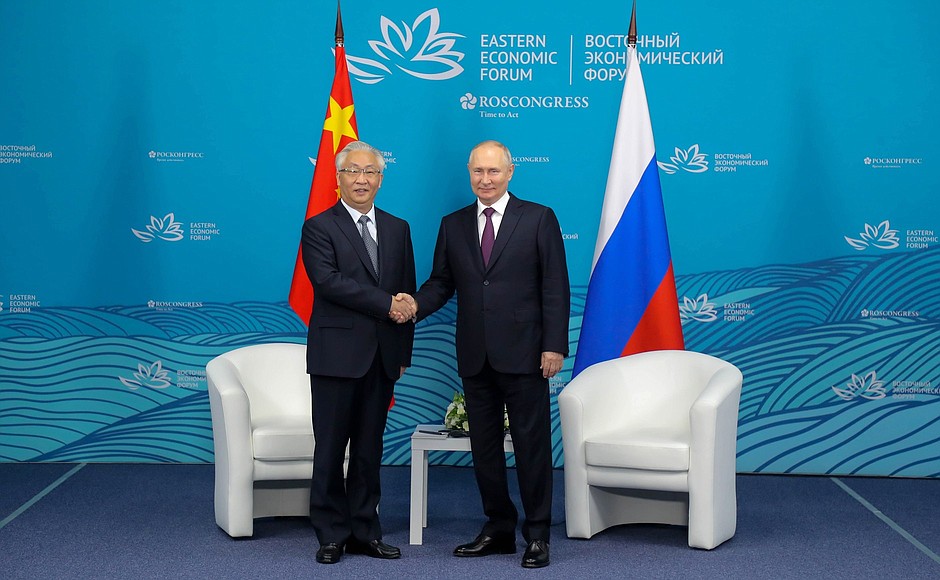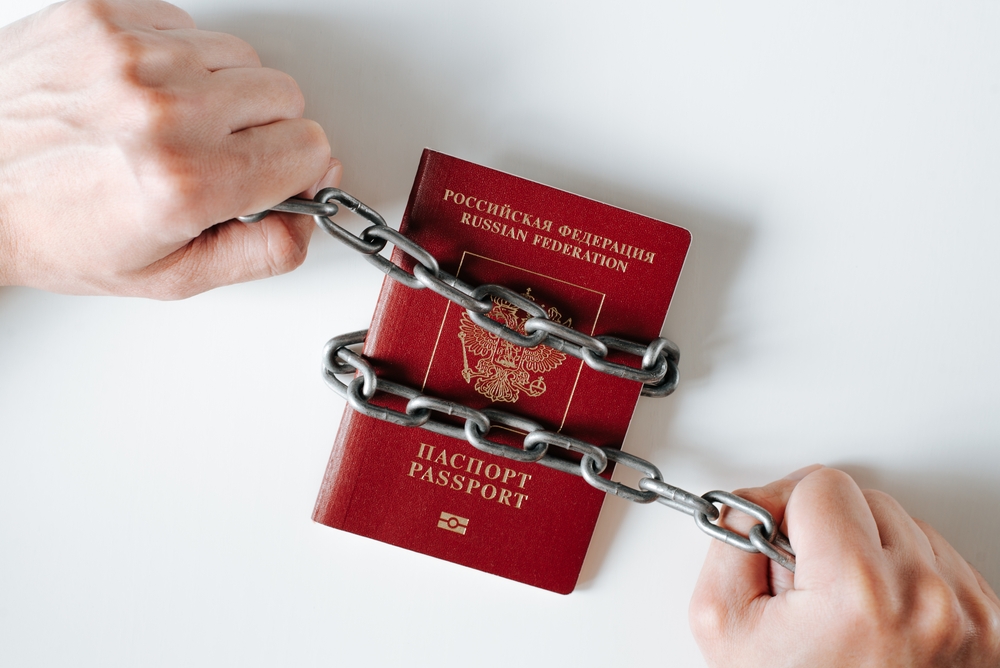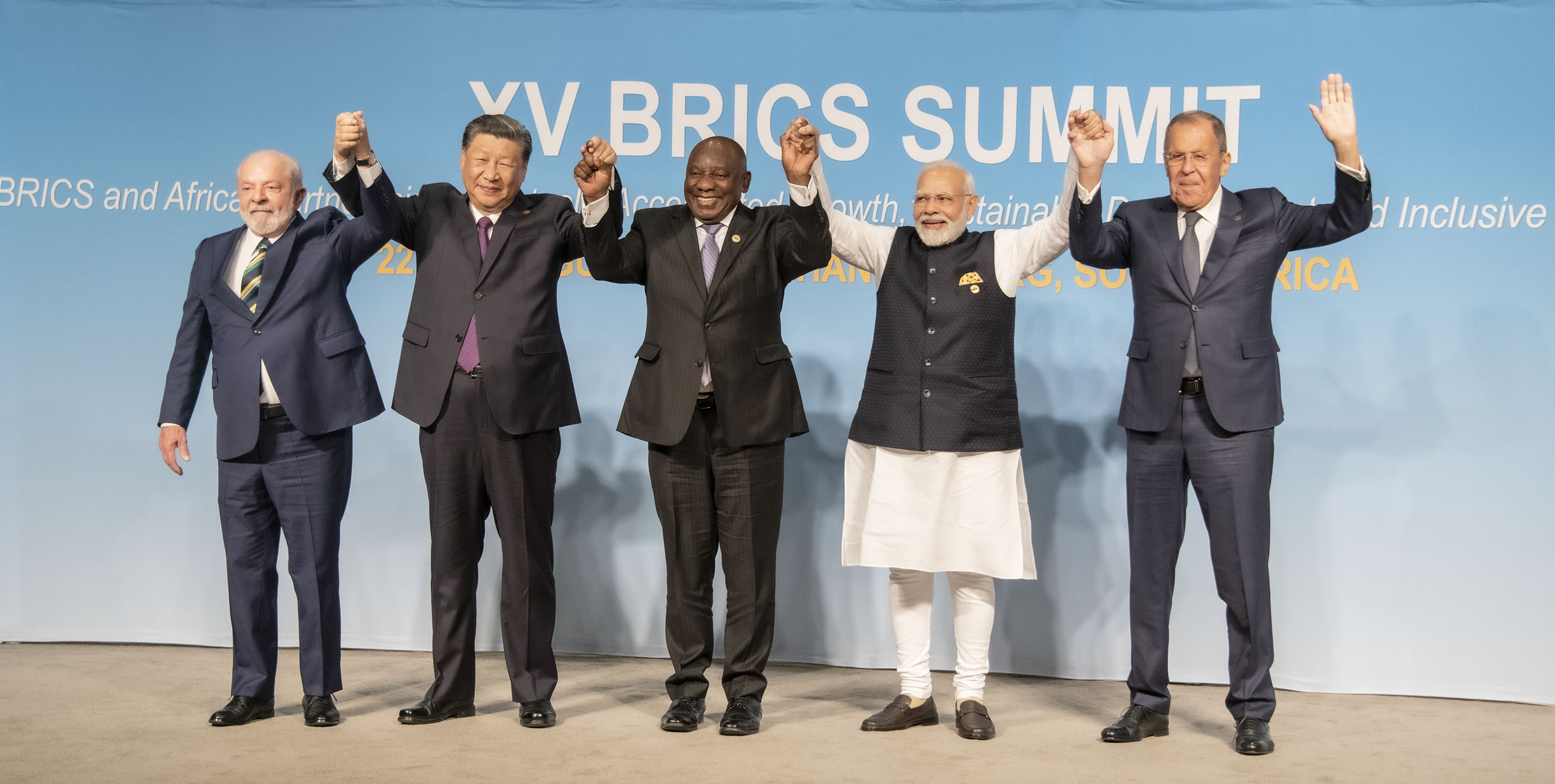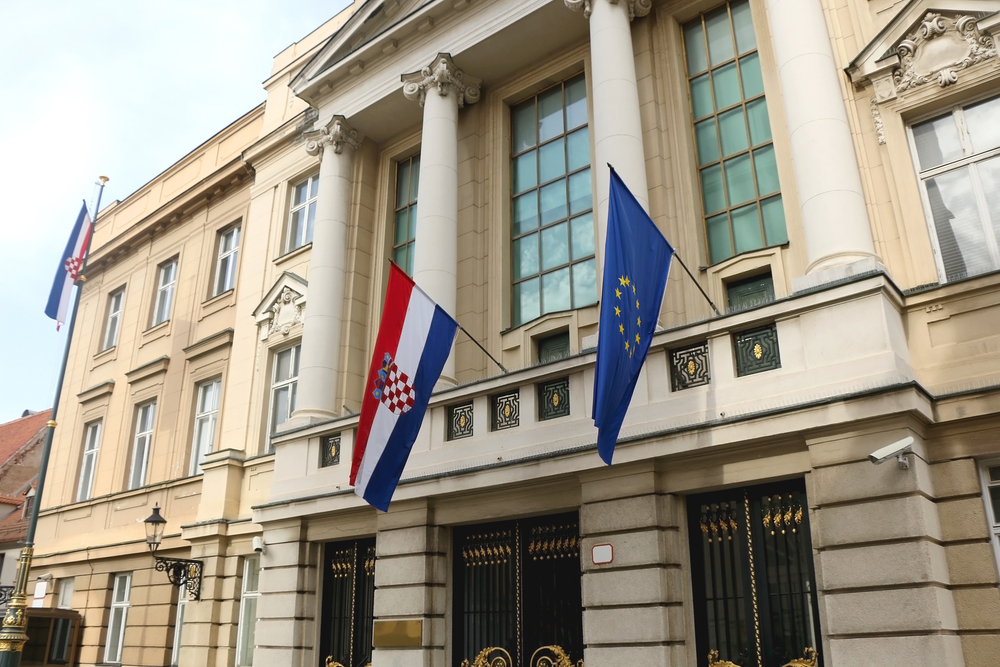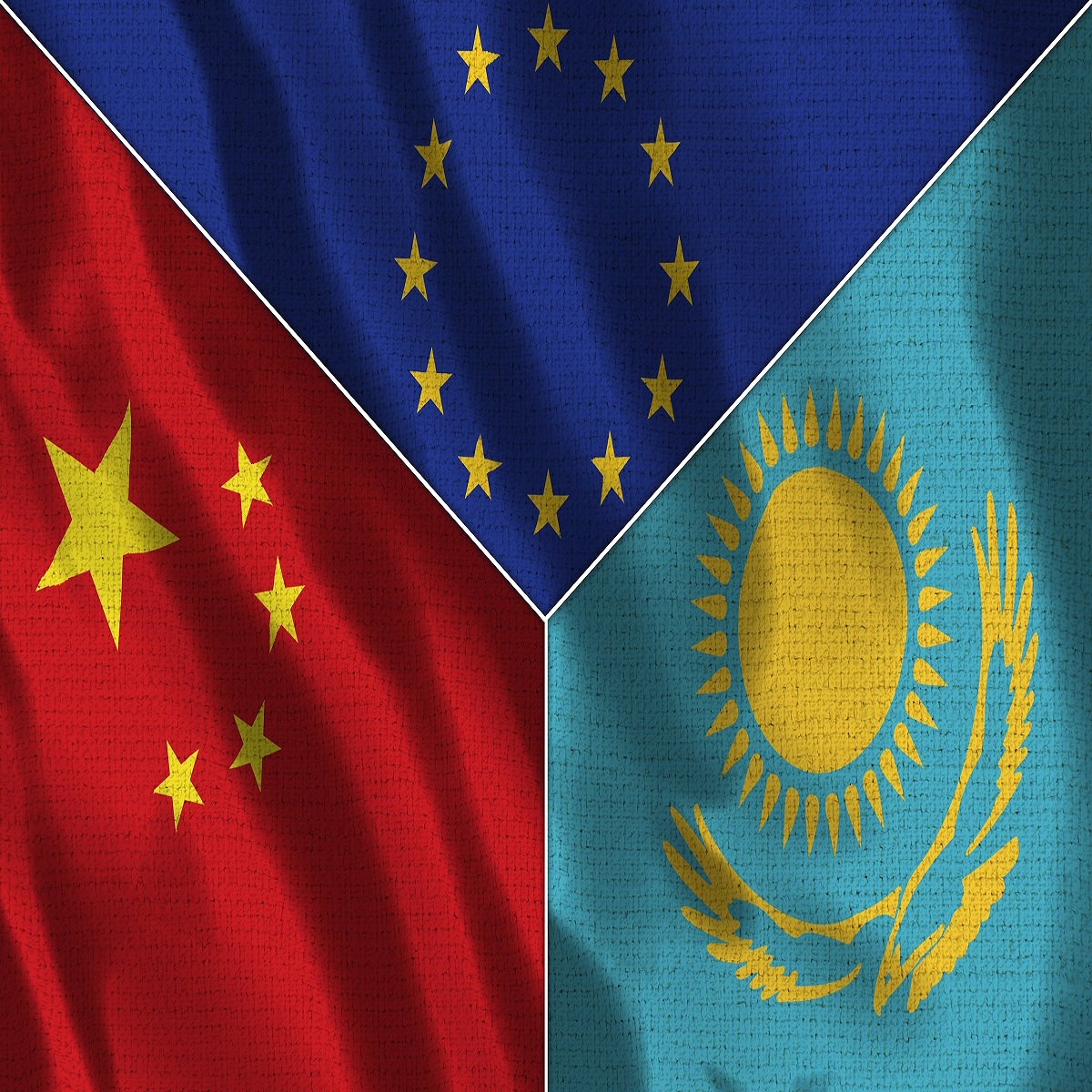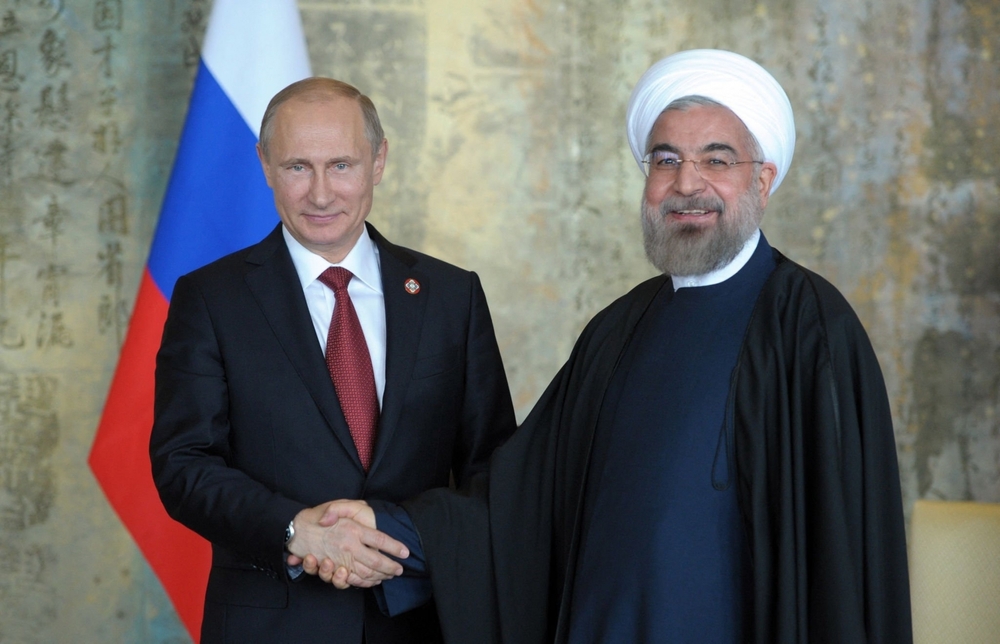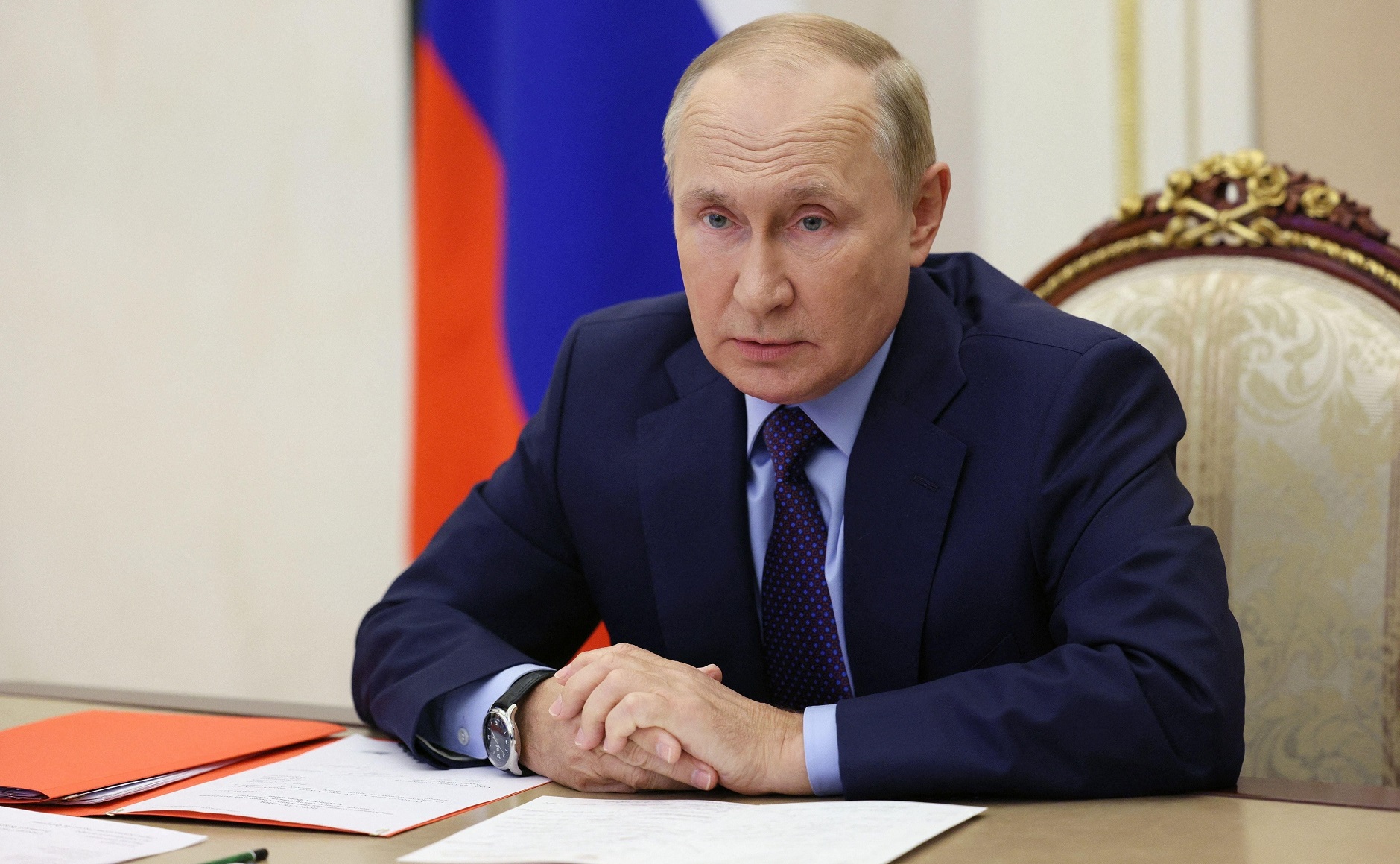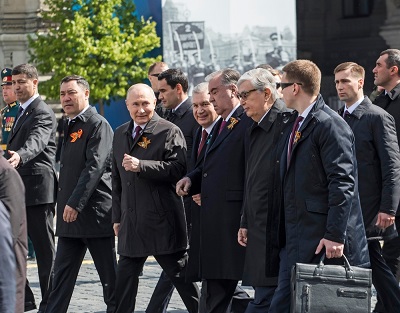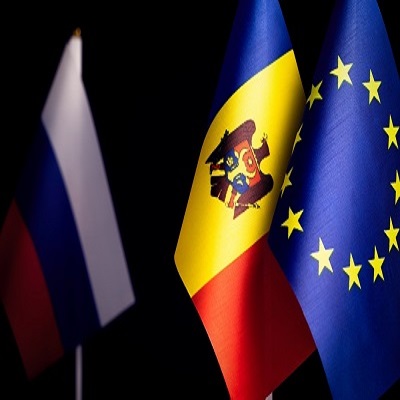Diagnosing Iran’s emerging pivot toward Russia and China
by Mahmood Sariolghalam
“The world is not just Europe and America,” Iran’s foreign ministry spokesperson declared on April 10, 2023, implicitly echoing the views championed for years by the senior leadership of the Islamic Republic regarding the ostensible rise of China and Russia. Indeed, the moment when Iran shifted from a traditional balancing relationship between East and West to decisively embrace Russia and China occurred on May 8, 2018, when the Trump administration withdrew the United States from the 2015 Joint Comprehensive Plan of Action (JCPOA). The U.S.’s decision to abandon the nuclear deal deeply disillusioned the Iranian leadership about any possibility of a rapprochement with Washington. Tehran had initially agreed to sign the JCPOA with the Obama administration based on the expectations that its promises to substantially reduce its nuclear program would be recompensed by the lifting of a substantial portion of U.S. economic sanctions. Consistent with its long-held objective of maintaining distance from Washington, Tehran was pleased that the JCPOA, as agreed, had permitted it to avoid normalizing relations with its adversary while still reaping the economic benefits by being able to resume oil exports and welcome foreign investment. Yet following the U.S. withdrawal from the nuclear deal, Iran concluded that Washington’s policy toward Tehran is unreliable and the American political class could not be swayed. The Iranian leadership was further disillusioned by the Europeans’ limited ability or willingness to preserve the 2015 agreement. Moreover, the convergence of additional domestic factors — such as pressure from hardliners to bolster the country’s defensive and offensive military capabilities, the weakening state of the economy, and looming challenges to the continuity of the political system — led to intensive debates about the direction of Iran’s foreign policy. Though the foreign and defense policy bureaucracy made the decision to reorient Iranian relations more fully toward China and Russia as early as 2019, it had to wait until the Hassan Rouhani government completed its term in August 2021 before taking any concrete steps in this direction. A clear indication of that decision can be traced to the constant stalling tactics used by the Rouhani delegation during the talks with the U.S. and the broader international community on potentially reviving the JCPOA. The pivot to the East took on a more noticeable character following the inauguration of President Ebrahim Raisi on Aug. 5, 2021. The Raisi presidency led to higher levels of policy compatibility in the totality of the Iranian political system, but even more importantly, it resulted in the executive branch rank and file being staffed with devotees, loyal administrators, and 1970s-era revolutionaries. This was a necessary move following the Rouhani presidency, during which somewhat liberal administrators permeated the bureaucracy. Since the Islamic Revolution, Iran’s legislative and judicial branches have consistently demonstrated their loyalty to the status quo. However, following each change of president, the executive branch has had the opportunity to fill some 11,000 administrative positions throughout the country with like-minded individuals. Now, with the inauguration of the more conservative Raisi government, all three branches are committed to maintaining the current inertia and coherence of the Islamic Republic. Iran is now pursuing a two-tiered foreign policy: a vigorous and determined shift toward Russia and China on the one hand, while, on the other hand, making incremental concessions on its nuclear program to give the impression that another deal can be struck to replace the JCPOA. The former approach is being implemented with almost zero fanfare and the latter with extensive publicity. Iran has been steadfast in its Eastward turn even though this shift does not enjoy the support of the general public or the professional and educated classes in particular. As such, all debate and discussions regarding the country’s foreign policy orientation have been restricted to tightly knit circles within the top ruling elite. Still, it is possible to deduce three broad reasons for Iran’s growing alliance with China and Russia: 1. A refusal to capitulate to or make vast concessions to the United States;2. The valuing of security concerns as more important than economic development needs; and3. The desire to see continuity of the political system.Avoiding capitulating to the United StatesIran has a long-standing policy of avoiding normalization with the United States. Throughout the post-revolutionary period, Tehran has deliberately avoided any moves toward rapprochement except in the face of imminent danger or a potential U.S. military operation against the Islamic Republic. The underlying calculus maintains that normalization with Washington would lead to profound consequences for the current Iranian political system, from disrupting its internal politics to overwhelming its economy and reshaping its culture. First of all, there is a deep-seated fear in Tehran that once American companies, educational institutions, and civil society organizations become active in the country, the Iranian leadership would gradually lose much of its grip on power. Anti-American sentiment also provides the revolutionary class with a common identity and keeps more internationally minded, moderate, or pragmatic groups out of positions of authority. Even following the JCPOA agreement and prior to the inauguration of U.S. President Donald Trump, the dominant perception in the Iranian capital was one of despair since most of the economic sanctions on the country remained intact. The ambiguous future of sanctions, combined with the possibility of spill-over effects on regional issues, created an atmosphere of uncertainty within the corridors of power in Iran. Another factor that dampens hopes for change in U.S.-Iranian relations is Washington’s long list of demands not only with regard to Iran’s foreign policy and nuclear program but also about the nature of its political system and internal conduct. A final facet standing in the way of improved bilateral relations — and closely related to the first — is the Iranian revolutionary class’s belief that rapprochement with the United States would inevitably result in undesired substantial changes in the political system. Any long-lasting improvement in the relationship would require not just policy change but also a redesign of state structures. In line with this thinking, concessions on the nuclear program would be inadequate; Iran would ultimately need to fully capitulate to the U.S., reviving bitter memories of the 1953 American-British coup d’état. The Farsi word for submission, tasleem, was, thus, widely used in the revolutionary state media and television to characterize Washington’s ostensible expectations from Tehran in the realization of the JCPOA. With its vast stake in the political and economic spheres of the state, Iran’s revolutionary class was not prepared to abandon power or open the political floodgates by making structural concessions to the U.S. and facilitating a possible takeover of the country by liberal presidential candidates. The disillusionment in the aftermath of the JCPOA agreement fostered a Raisi-type conservative presidency, an essential prerequisite to the consolidation and continuity of the revolutionary Iranian polity.Precedence of security concerns over economic developmentAt no point in its history has the Islamic Republic prioritized domestic economic development. Continued reliance on energy exports has furnished the state and its elites with a stream of income to maintain this system. Iran’s activist foreign policy antagonizes a large number of neighboring and external countries, yet the leadership considers it essential to protecting the state. For many decades, Iran’s national security doctrine has articulated a hedging strategy of relying on Shi’a and/or anti-Western enclaves in the Middle East to expand its territorial influence vis-à-vis major Arab countries, Israel, and the United States. Turkey is perhaps the only major country in the region with which Iran has been able to manage a stable relationship over the long term. In recent years, Tehran has additionally militarily aligned itself with a major outside power — Russia. Furthermore, Iran’s drone and missile capabilities as well as its geopolitical influence in much of the region have served as a dependable deterrence strategy. Such a conceptualization of national security, threat perceptions, and statecraft have left little room to pursue economic development in a globalized economy. This sharply contrasts with regional neighbors such as Saudi Arabia, Turkey, Israel, and the United Arab Emirates, which have deliberately been concentrating their energies on economic diversification, high-tech industries, renewable energy, and attracting foreign direct investment (FDI). The economic rise of China and Russia’s military and political capabilities have provided a wide range of opportunities for numerous developing countries, including India, Indonesia, Brazil, Nigeria, South Africa, and Mexico, to diversify their foreign and economic policies. However, while drawing on the support they can obtain from Beijing and Moscow, most still strive to maintain a balance between the West and the East. These countries benefit from European and American financial and technological sectors and earn sizeable profits by selling in their markets. But since national economic development is not a priority for the Iranian leadership, and it devotes a large proportion of its energies toward domestic and national security, even a complete political and economic pivot away from the West will not jeopardize Iranian state-owned industries nor affect the already-sidelined private sector and dwindling consumer markets. Indeed, Western companies and banks have also removed Iran as a potential market due to U.S. and European sanctions. Ultimately, Iran’s pivot toward the East will reduce its economy to selling fossil fuels to China and a few other Asian-Pacific countries in exchange for commodity imports. And it is unlikely that these consumers will turn around and invest in Iranian industries due to the sanctions restrictions currently in place. The only conceivable investment opportunities would perhaps be in the form of barter, wherein Iran might export petroleum in exchange for infrastructure development with no financial transactions involved. Furthermore, the timing of the Iranian leadership’s decision to reduce the country’s political and economic reliance on the West in general and Europe in particular was critical: Namely, that strategic choice was made ahead of the looming leadership transition at the top to avoid possible dissenting views when Iran’s third supreme leader takes over. Closer relations with Russia and China promise to not only de-risk Iran’s foreign economic relations but also help maintain an optimum level of progress on the nuclear program as a strategic component of the national security doctrine.Continuity of the political systemIran’s anti-Americanism is considered a highly treasured geostrategic asset in Moscow. In a sense, Iran is Russia’s southern Belarus. From a historical perspective, all permutations of the Russian state over the last two centuries, from the Russian Empire to the Soviet Union to the Russian Federation today, have pursued a similar policy of trying to keep Iran out of the Western orbit. But the Russian-Iranian military partnership that developed in Syria and solidified over Ukraine — specifically covering military hardware, cyber software, and digital surveillance tools that Iran has no hopes procuring through cooperation with the West — has also furthered Tehran’s leverage vis-à-vis Israel and the United States. Iran is expected to receive 24 Su-35 fighter aircraft from Russia in addition to S-400 air-defense systems. And the relationship is developing in both directions. Tehran has also supplied Moscow with low-cost drones and weapons systems. Additionally, the two countries are cooperating in the energy sector, with Russia reportedly having delivered 30,000 tons of diesel fuel to Iran in February and March 2023; yet given Russia’s technological limitations in the energy sector, it is not clear whether these projects will eventually and efficiently materialize. Though relations with Russia have undoubtedly expanded in the military domain since the invasion of Ukraine, one can also deduct other Iranian motives to further solidify relations with Moscow. There are at least two crucial reasons behind Iran’s desire to tighten its cooperation with Russia and move from a transactional to a strategic bilateral relationship. First is Tehran’s need to secure intelligence on Israeli and American operations against Iran. And second is the desire to draw on Moscow’s potential political and intelligence assistance during the transition period to the third supreme leader of Iran. Such expectations can be met with or without Vladimir Putin in the Kremlin since they fulfill fundamental Russian interests vis-à-vis Iran and the West. Iran has reached a point where it can no longer depend on increasing internal control and expanding regional deterrence to maintain a status quo conducive to preserving the political system. Israel’s traditional “periphery doctrine,” of reaching out to non-Arab countries to build security partnerships, has now expanded to the South Caucasus and Central Asian regions. Moreover, most Arab neighbors of Iran today maintain normal or at least not overtly antagonistic diplomatic relations with Israel, which has improved American leverage with regard to Tehran as a result. Facing limited foreign policy options, including diminishing hopes of reaching a modus vivendi with the United States through reviving the JCPOA and a lasting divergence in relations between Russia and the West, Tehran has had to succumb to Moscow. This was not only to procure new military hardware but also to secure its position in a shifting regional matrix, deter potential future threats to its internal security, and safeguard the continuity of the political system. In this evolving context, as long as Russian interests remain opposed to those of the West, Moscow will likely do whatever is necessary to protect the Islamic Republic of Iran. Unlike Russia’s more strategic and long-term calculus vis-à-vis the Islamic Republic, China confines itself to mostly political and commercial relations with Iran and appears to cautiously act in parallel to the U.S. in the Middle East rather than in opposition to it. Beijing has immense short-term and long-term commercial and technological interests in maintaining peace and cooperation with Israel as well as with major Arab countries, such as Saudi Arabia and the UAE. Moreover, petroleum imports from Iran can easily be substituted in a global glut. That said, Beijing’s mediation role between Iran and Saudi Arabia highlights that for China, good relations with the Islamic Republic provide useful political leverage when navigating the region as well as in its global rivalry with the United States.Challenges aheadThis article attempted to explain Iran’s calculations behind politically and economically pivoting toward Russia and China, founded upon the assumption that the deep state in Iran is prioritizing continuity and issues of succession in the political system. Almost all matters of state are overshadowed by these medium- to long-term concerns — a set of priorities that Iranian leaders have, in fact, held for centuries. The question facing the government today, however, is how the revolutionary domestic apparatus can strive to survive the myriad sources of domestic and foreign challenges, including the Islamic Republic’s stand-off against the Western world. In contrast to the United States and Europe, Russia and China are not concerned with Iran’s internal political system, constitutional structures, or governmental machinery. Of its three main adversaries, namely, the U.S., Israel, and Saudi Arabia, Iran recently concluded that a rapprochement with Saudi Arabia is a possibility, having made a complete U-turn on this in March 2023, with the help of Chinese mediation. Iran had learned the hard way to compromise with the Saudis, given the latter’s instrumental political and financial role among Iranian minorities inside the country as well as Iranian opposition groups in Europe and the U.S. In order to mitigate this influence, Tehran apparently decided to make concessions on Yemen in return for reduced Saudi support for the Iranian opposition. Of all the points of leverage at Iran’s disposal in the Middle East, Yemen appears to be the least valued, especially compared to Lebanon, Iraq, and Syria. Evidently, the Iranian leadership’s incremental moves toward China and Russia stem from an unwillingness to redefine the underpinnings of the country’s national security doctrine. Not only does Iran’s current foreign policy orientation not run in opposition to Beijing’s or Moscow’s overall international outlook, but in many ways, its anti-Western predisposition in a critical region of the world serves the two powers in their difficult relationships with the United States. By aligning with Russia and China in the security and commercial spheres, Iran feels it has acquired an insurance policy against any potential negative resolutions emanating from the United Nations Security Council. And even more consequentially, with an eye toward the potentially turbulent looming period of leadership transition and succession, Tehran may feel comfortable with relying on Moscow and Beijing for security, political, intelligence, and financial support. But a major challenge confronts the political system: Will the Iranian public, professional and intellectual groups, and the country’s slim private sector — all deeply accustomed to Western ideas, systems, and customs — be willing to embrace and adapt themselves to this Eastward shift that was formulated by Iran’s political and security elites? Perhaps the social and political atmospherics that emerge as the Islamic Republic’s third supreme leadership seeks to consolidate its power will reveal the durability of this unbalanced geopolitical reorientation.
